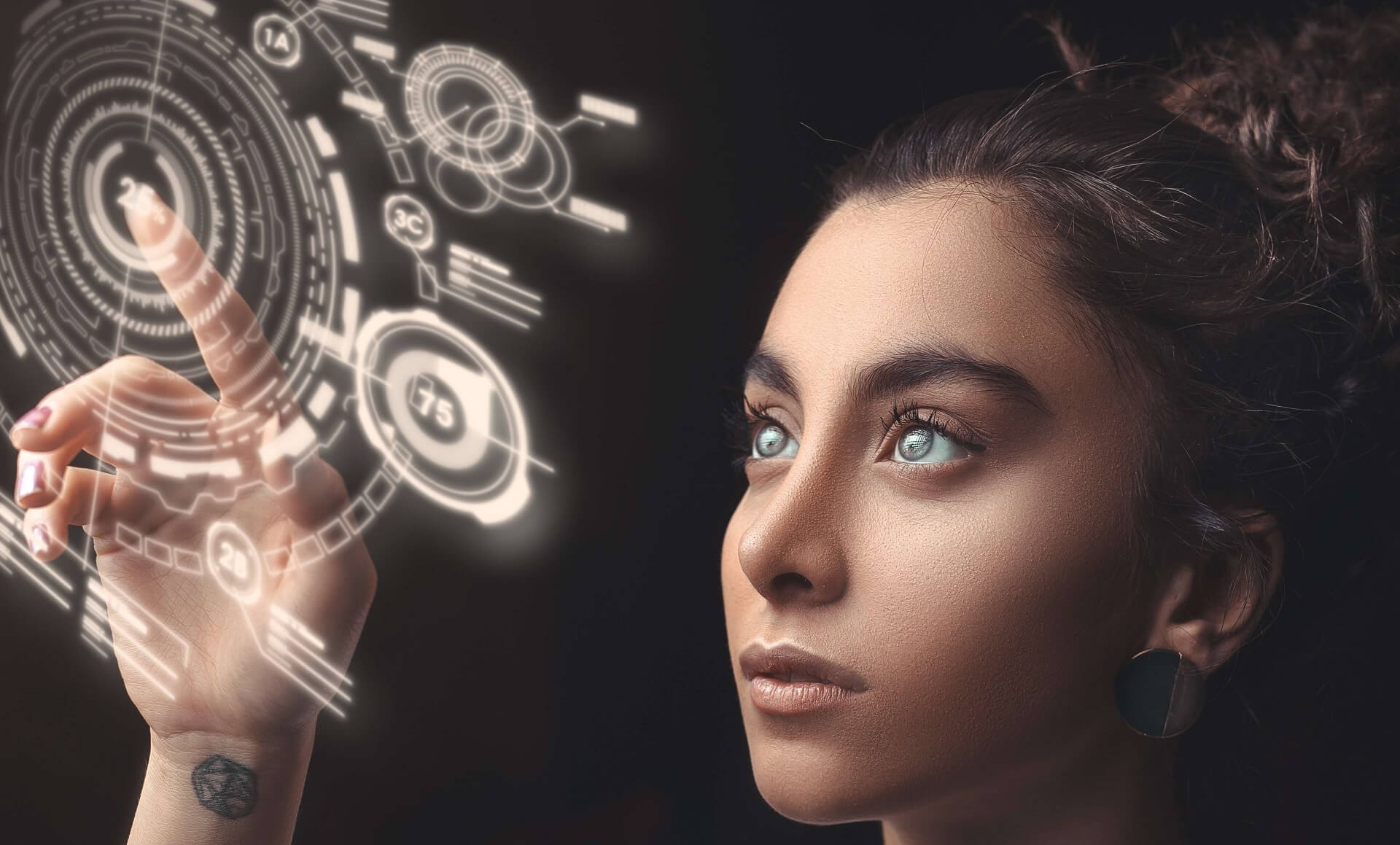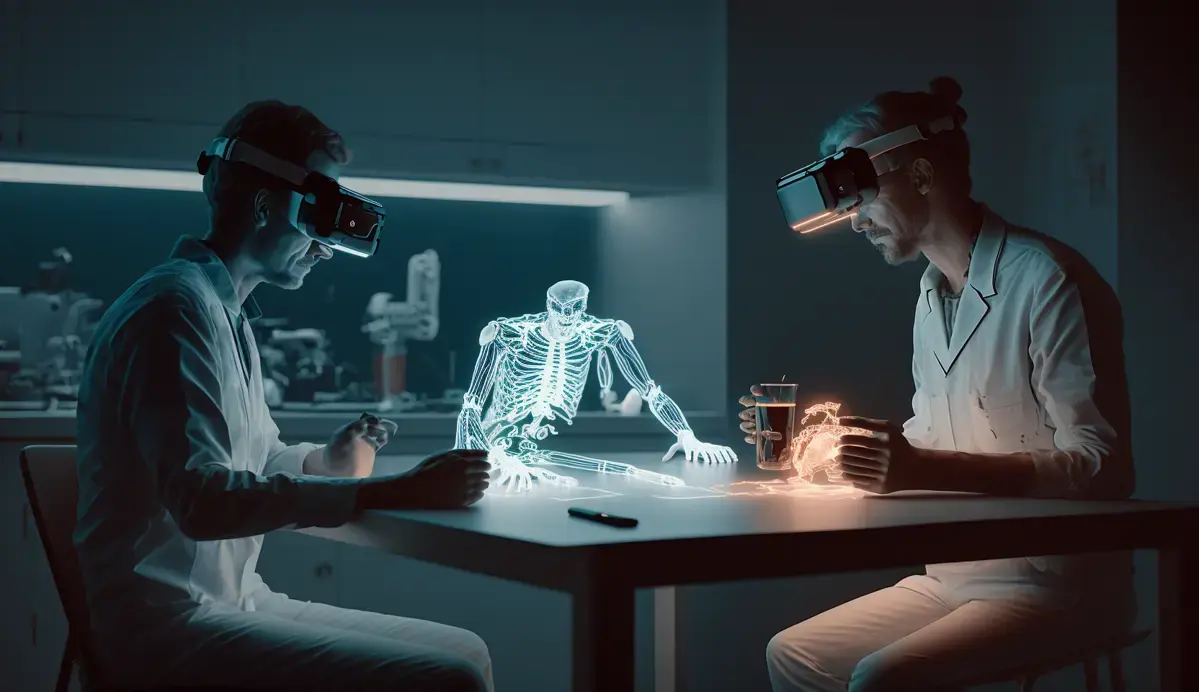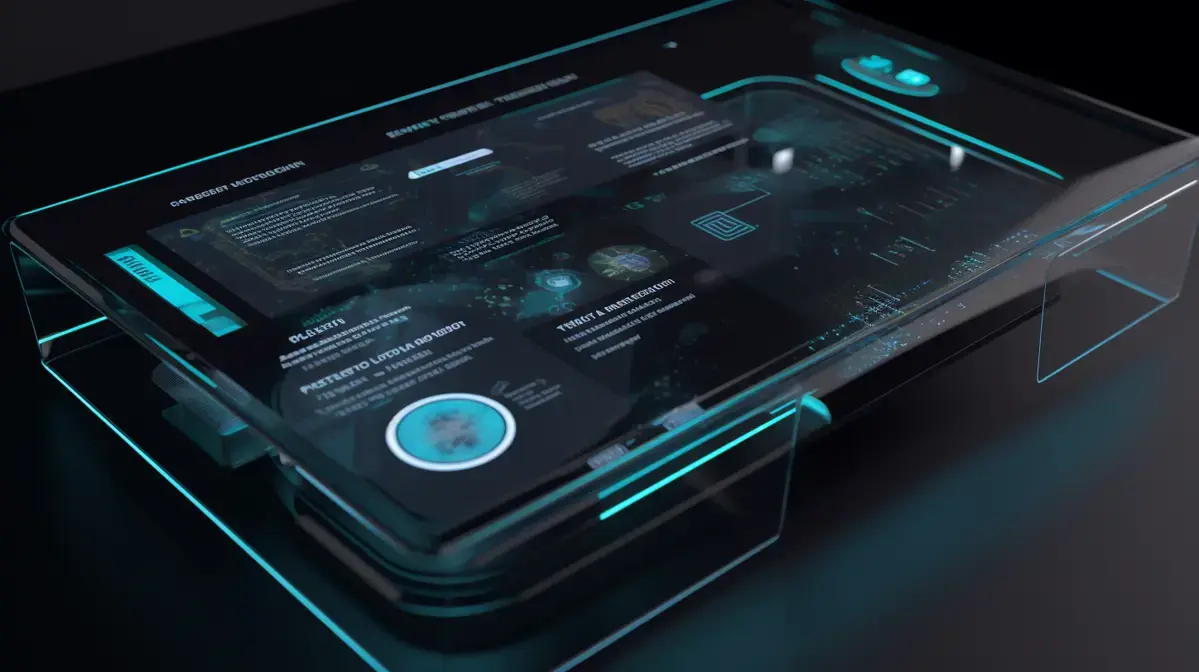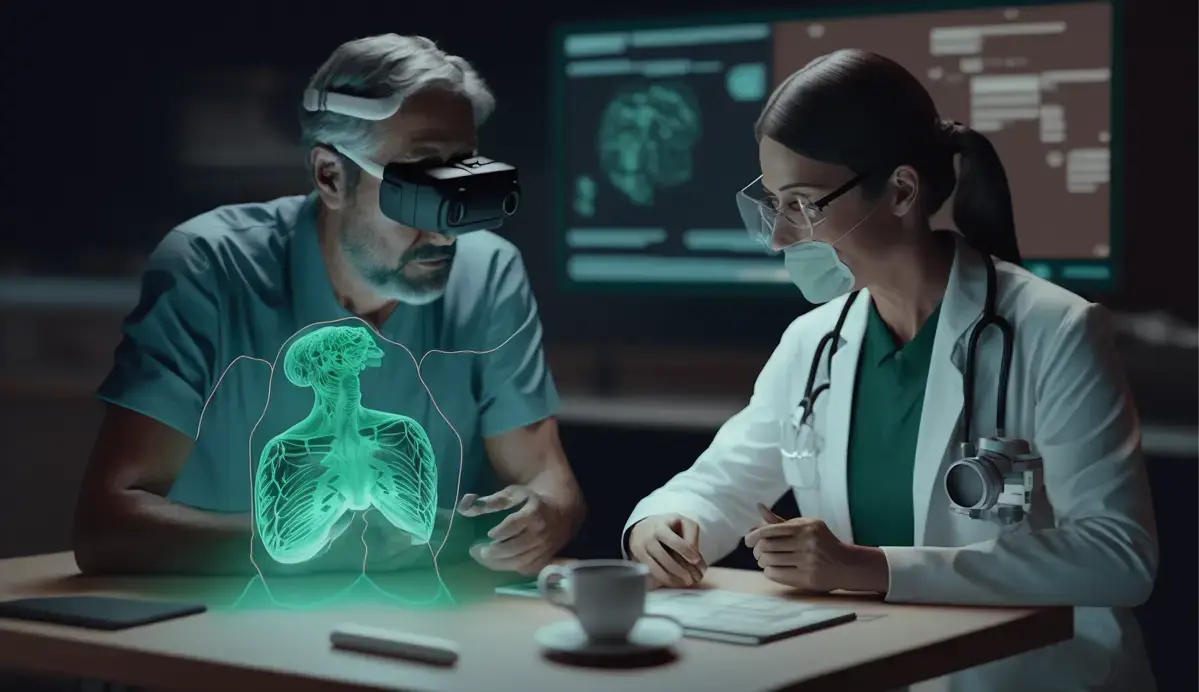Augmented Reality (AR) is revolutionizing the sports venue design industry by creating immersive environments that enhance fan experience. Through AR technology, fans can visualize game statistics and replays on their mobile devices in real-time, making them feel more involved in the action.
Sports teams and venues are using AR to create interactive experiences for fans. For instance, a soccer team can use AR to provide live player data such as speed or distance covered during a match while projecting 3D graphics of players onto the field via giant screens.
Not only does this technology offer an unmatched level of engagement for spectators but it also provides valuable analytics that coaches could analyze after games allowing them to make better decisions.
AR has become an effective tool for marketers too since they now have access to innovative ways of showcasing brand sponsorship opportunities within these augmented spaces.
Augmented Reality offers significant potential benefits across multiple aspects of sport from improving fan experience at matches through enhancing marketing capabilities; providing dynamic visualization aids during coaching sessions – proving highly beneficial overall. If you want your sporting event’s audience captivated with excitement throughout then look no further than incorporating Augmented Reality into your designs today.
For more information about how Augmented reality works visit argeopin.com
Table Of Contents
- Key Points
- Understanding Augmented Reality in Sports Venue Design
- The Impact of Augmented Reality on Fan Experience
- Enhancing the In-Game Viewing Experience with Augmented Reality
- Interesting Facts
- Using Augmented Reality to Improve Stadium Navigation and Wayfinding
- Creating Interactive Sponsorship Opportunities through Augmented Reality
- The Role of Augmented Reality in Improving Safety and Security at Sporting Events
- FAQs
- Key Takeaways

Key Points
- Augmented reality enhances fan experience by providing a more immersive and interactive environment.
- The use of augmented reality in sports venue design allows for personalized experiences, such as ordering concessions directly from your seat.
- Augmented reality can also be used to display real-time player stats and replays, providing fans with a better understanding of the game.
- The implementation of augmented reality technology requires careful consideration and planning in order to ensure seamless integration into the overall stadium design.
Understanding Augmented Reality in Sports Venue Design
When it comes to sports venue design, there is no denying that augmented reality (AR) has revolutionized the game. As an expert in this field, I have seen firsthand how AR can transform a traditional stadium into a futuristic and interactive environment.
One of the most exciting aspects of AR in sports is its ability to enhance fan engagement. Imagine being able to experience replays from any angle or even view player stats and performance data while watching live games. The possibilities are endless with AR, as fans can now immerse themselves in the action like never before.
But it’s not just about enhancing the spectator experience – AR also offers tremendous benefits for athletes and coaches alike. By utilizing real-time data visualization tools, players can receive personalized feedback on their performance during training sessions or games. Coaches can use this information to make informed decisions about strategy and tactics throughout matches.
Perhaps one of my favorite examples of successful implementation of AR technology was at Super Bowl LIII when CBS Sports used “Eye Vision” graphics featuring virtual on-field markers illustrating first-down lines alongside other non-penalty related rules such as offsides penalties etc., making viewership more understandable for casual fans who may not be familiar with football terminology.
Augmented Reality has transformed every aspect surrounding designing sports venues – from planning stages all through execution- bringing sport closer than ever before through immersive experiences that engage spectators at new levels while empowering teams build winning strategies.
The Impact of Augmented Reality on Fan Experience
Augmented reality technology is a game-changer in sports venue design, improving the fan experience and creating new opportunities for sponsors to engage with their audience. Imagine standing at your favorite stadium, witnessing players come alive through AR overlays that provide real-time data insights such as player stats, replays of key moments or even alternative camera angles you can explore. With AR’s ability to merge digital content into real-world environments seamlessly, fans are now able to see beyond what was previously limited by physical boundaries.
One example where augmented reality has positively impacted sports venues is in providing more immersive experiences during halftime shows and other events. In 2018 Super Bowl LII’s halftime show featuring Justin Timberlake employed one such method by utilizing hundreds of drones equipped with LED lights that formed dynamic shapes in the sky above spectators’ heads providing a breathtaking visual spectacle made possible through Augmented Reality.
Furthermore, Augmented Reality can help venues increase their revenue streams via sponsorships and advertising while building deeper relationships between advertisers and fans alike. For instance an automotive manufacture may use its Meta tagging brand logo within an Augment Reality application which when viewed on a mobile device will showcase it moving around that specific vehicle once scanned upon activation; this augments the user engagement compared to just having traditional signage displayed statically from afar.
Augmented reality presents endless possibilities for designers looking to create unique sporting experiences using cutting-edge tech – expanding horizons as never before seen allowing purveyors of all industries innovate like never before.
Enhancing the In-Game Viewing Experience with Augmented Reality
Augmented reality technology has revolutionized the way sporting events are experienced by fans. From enhancing fan engagement to optimizing venue design, AR is quickly transforming the sports industry. It’s been incredible to witness firsthand how AR is changing the game for both athletes and fans alike.
One of the most significant benefits of using augmented reality in sports venue design is its ability to create immersive environments that take fan experiences to new heights. By overlaying digital information onto real-world environments – like projecting player stats or replays onto stadium screens – venues can now offer a truly interactive experience that keeps spectators engaged and entertained throughout every moment of a match.
AR also provides opportunities for greater personalization at sporting events – something today’s consumers have come to expect from all their tech-enabled experiences. For example, apps with built-in AR features allow fans to customize their viewing experience by highlighting specific areas on-screen or providing access additional content during replays.
Overall, It’s clear that augmented reality will play an increasingly vital role in designing stadiums and arenas moving forward as teams seek new ways keeping up with evolving expectations among younger generations who crave more immersive entertainment experiences than ever before.
Interesting Facts
- Augmented Reality (AR) in sports venue design is becoming increasingly popular, allowing fans to experience an immersive environment during games.
- AR can enhance the fan experience by providing real-time statistics, replays and highlights of the game.
- Sporting teams are also using AR to create virtual tours of their stadiums and arenas for potential investors or sponsors.
- The use of AR in sports is not limited to just professional leagues. College teams have also begun integrating AR technology into their fan experiences with great success.
- In addition to enhancing the overall fan experience, utilizing augmented reality technology can increase revenue opportunities through sponsorships and advertising partnerships.

Using Augmented Reality to Improve Stadium Navigation and Wayfinding
Augmented Reality (AR) is one of the most transformative technologies that has not only revolutionized how we interact with digital content, but also transformed industries across various sectors. One such industry where AR technology is making a significant impact is sports venue design.
AR offers an immersive experience to spectators by enabling them to engage more actively with the game and its surroundings. By using wearables or mobile devices equipped with AR software, audiences can enjoy real-time statistics about players’ performance or even view 3D visualizations of plays as they happen on the field. This enhances engagement and adds value for fans who attend live events.
Moreover, designing stadiums using AR provides architects a unique opportunity to visualize every aspect of their projects in advance before implementing any changes physically. From seating arrangements to lighting fixtures and access areas; each element can be tested virtually reducing costs significantly while improving efficiency in project delivery timelines.
Take Manchester City’s Etihad Stadium as an example; it features interactive walkways which provide visitors custom experiences such as meeting virtual players or being able to see how different seat locations affect sightlines during games- all accomplished through Augmented Reality technology. Such features have elevated fans’ experience within this stadium – creating long-lasting memories for those attending games there over time.
Applying augmented reality in sports venue design creates captivating visuals that enhance fan engagement while streamlining development processes for stakeholders involved in building these venues alike – something we’re sure will continue developing into new forms over time.
Creating Interactive Sponsorship Opportunities through Augmented Reality
As an Augmented Reality expert, John has witnessed the evolution of augmented reality in sports venue design. In his line of work, he has seen how AR technology can transform any stadium or arena into a dynamic and engaging environment for fans. With AR systems installed throughout the stadium, spectators can now experience every moment on the field from a whole new perspective.
For instance, imagine watching your favorite soccer team play while wearing smart glasses that display player stats and real-time 3D animations. Or enjoying an NFL game with virtual markers indicating each touchdown scored by either team as they happen right in front of you. The possibilities are endless when it comes to integrating augmented reality into sports venues.
But what makes this technology truly remarkable is its ability to create immersive experiences for fans beyond just watching games live at the stadium – even those who cannot make it physically? John’s personal experience recounts how he was able to connect virtually with fervent football supporters globally during last year’s UEFA Nations League final using VR headsets equipped with cutting edge spatial audio systems that provided him with realistic sounds which made him feel like he was there among them.
Whether you’re talking about soccer stadiums or basketball arenas – implementing AR can revolutionize fan engagement forevermore. Using state-of-the-art equipment such as digital scoreboards or advanced cameras capable of capturing high-quality footage and data visualization techniques will ensure that audiences remain entranced by every moment unfolding before their very eyes — transforming passive viewership into active participation within seconds.
So whether it’s cheering on your local football team from home via “mixed reality” broadcasts or immersing yourself completely inside one these facilities through immersive haptic feedback suits – experiencing sport events alongside these technologies is something everyone should try at least once… No doubt about it; Augmented Reality is here & ready to level-up our next generation sporting experiences like never before.
The Role of Augmented Reality in Improving Safety and Security at Sporting Events
Augmented Reality (AR) has been revolutionizing the world of sports venue design, and I have witnessed firsthand its impact. With AR technology, designers can now create immersive environments that enhance the fan experience in unprecedented ways. Imagine sitting at a football or soccer game and seeing not just what is happening on the field but also receiving real-time stats about each player or even having access to multiple camera angles.
This innovation has transformed how fans interact with their favorite sport while watching live games. It’s like being transported into another dimension where everything feels more engaging and interactive – it’s no longer just about watching a game; it’s about becoming part of it.
For instance, let us take basketball arenas; Augmented Reality allows for courtside seats to be enhanced by digital overlays that display information such as shot percentages from different areas of the court or even displays advertisements in specific sections only visible through your phone lens. Such features add layers upon layers to traditional sports events giving fans additional insights beyond solely relying on commentators’ explanation during play-by-play analysis.
Moreover, this technology enables stadium owners and operators to make better-informed decisions when designing new venues or renovating existing ones based on data-driven insights from spectator engagement rates measured through augmented reality software within these facilities’ premises.
Overall Augmented Reality is one toolset transforming modern-day sporting experiences into something much more than mere spectacles but instead full-fledged entertainment packages catering unique experiences tailored for every individual passionate enough towards their preferred games- all thanks due increasingly sophisticated technological advances reshaping our society today.
FAQs
1. What is augmented reality?
Augmented reality (AR) is the integration of digital content with the real world environment, allowing users to interact in a more immersive and engaging way.
2. How can AR be used in sports venue design?
AR can be used to provide fans with an enhanced experience by overlaying information such as player stats or game highlights onto their view of the field or court.
3. What are some benefits of incorporating AR into sports venues?
Incorporating AR into sports venues can increase fan engagement, enhance overall experience and create new revenue streams through advertising opportunities.
4. Are there any challenges associated with implementing AR technology in sports venue design?
Some challenges include ensuring reliable internet connectivity for all users, minimizing distractions during gameplay and optimizing user interfaces for different devices.

Conclusion
Augmented reality technology is transforming the way sports venues are designed and experienced. By integrating AR elements into the physical environment, designers can create immersive experiences for fans that enhance their enjoyment of live events.
From interactive displays to virtual player stats and game highlights, AR technology has opened up a whole new world of possibilities for sports venue design. Fans can now feel like they are part of the action in ways never before possible.
As this technology continues to evolve, we can expect even more exciting developments in how it’s used in sports venues around the world. Whether you’re a fan or an architect/designer looking to elevate your projects, augmented reality is definitely something worth keeping an eye on.
Key Takeaways
-
- Augmented reality (AR) can create immersive environments in sports venues.
- Sports teams and fans can benefit from AR technology by enhancing game experiences, providing real-time statistics, and creating interactive displays.
- The use of AR in sports venue design should consider accessibility for all attendees, as well as the management of data privacy concerns.
- AR has the potential to revolutionize how we experience live sporting events and may become a standard feature in future stadium designs.





































